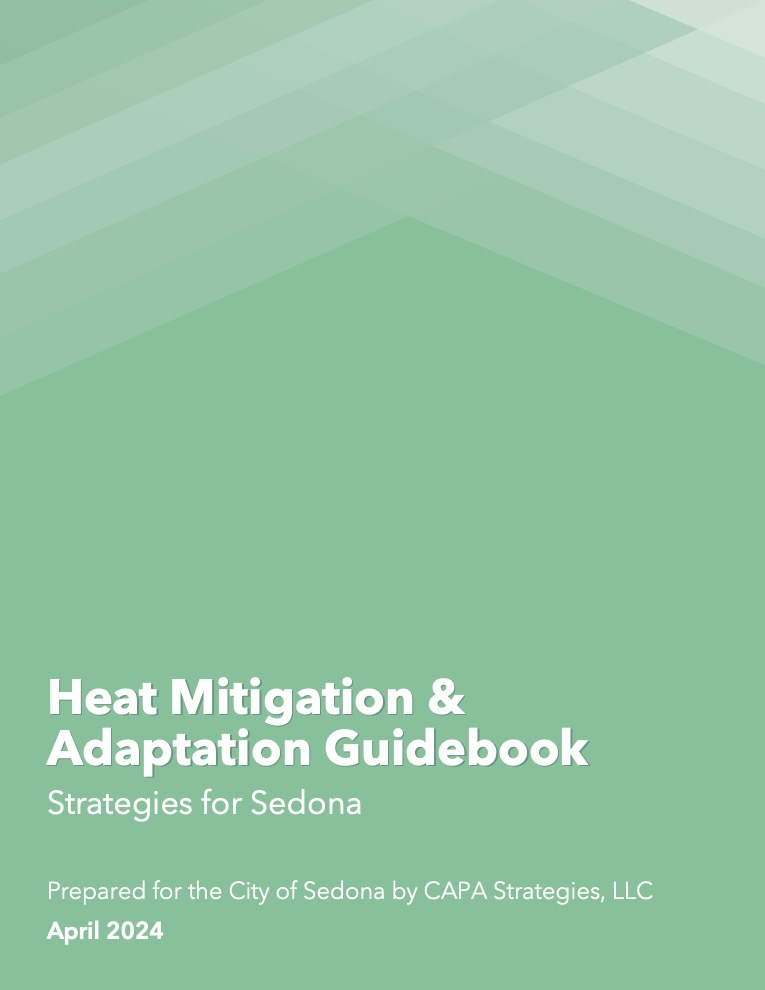Heat Mitigation & Adaptation Guidebook – Strategies for Sedona
Organization: CAPA Strategies
Year: 2024

Responding to heat will require a mix of mitigation (reducing temperatures and limiting heat exposure) and adaptation (coping when heat cannot be mitigated); physical, social, and policy interventions; and action by the City, professional partners, property owners, and community members. While some solutions can be quickly implemented, others will take months or years to put in place. Solutions exist at the household level and community-wide. As local leaders and residents plan for a hotter future, it will be essential to consider a range of heat mitigation and adaptation options, and select a complementary blend of solutions which meet immediate and long term needs. Ideally, heat mitigation solutions can integrate with existing priorities to address other environmental and health hazards (e.g., air pollution and stormwater runoff). This guidebook presents solutions which are supported by existing literature, and which are suitable for the steppe climate of Sedona. Of the multiple solutions to mitigate heat, literature overwhelmingly emphasizes tree planting and preservation because trees offer numerous co-benefits such as air quality improvement, stormwater retention, flood reduction, improved neighborhood aesthetics, and increased property values. However, trees are not appropriate in all situations, nor are they the only available option for heat mitigation. In Sedona, a city positioned near the southwest Arizona desert and coping with regional drought, trees are not the most obvious line of defense, though they are one option. In addition to a summary of the benefits and challenges associated with trees, content will emphasize lesser known options which can support, replace, complement, or amplify a vegetation-based strategy. The guidebook includes ideas for maximizing the effectiveness and sustainability of various heat mitigation and adaptation strategies. This is not a prescriptive implementation plan, but rather an offering of potential solutions to help stimulate and structure ongoing conversations about extreme heat.